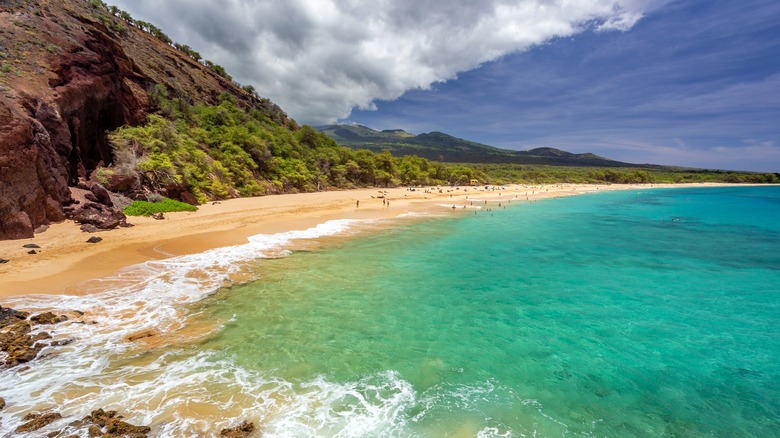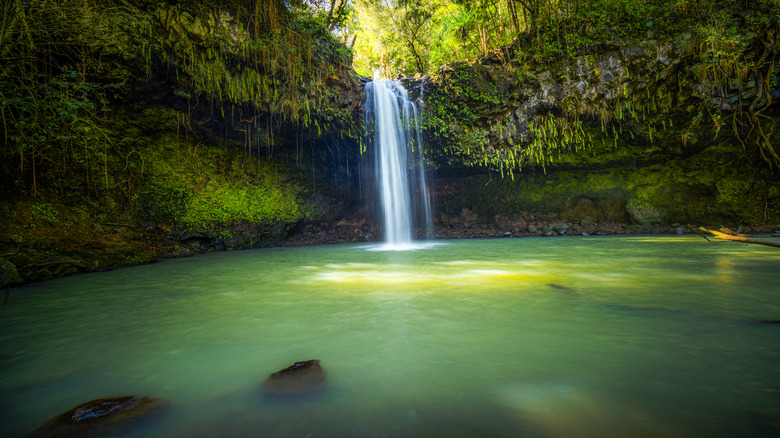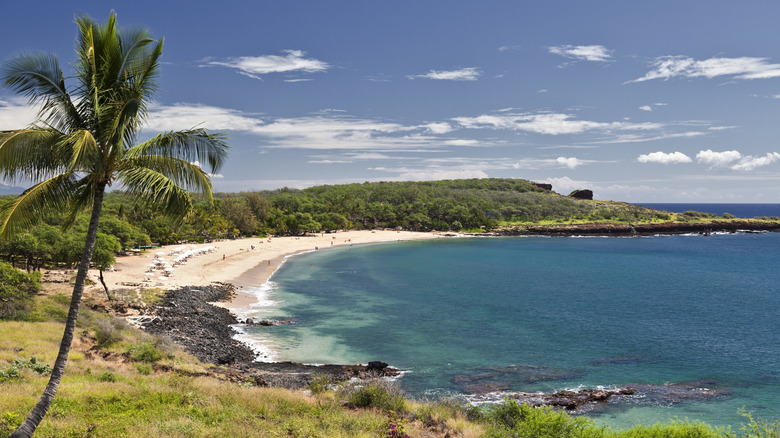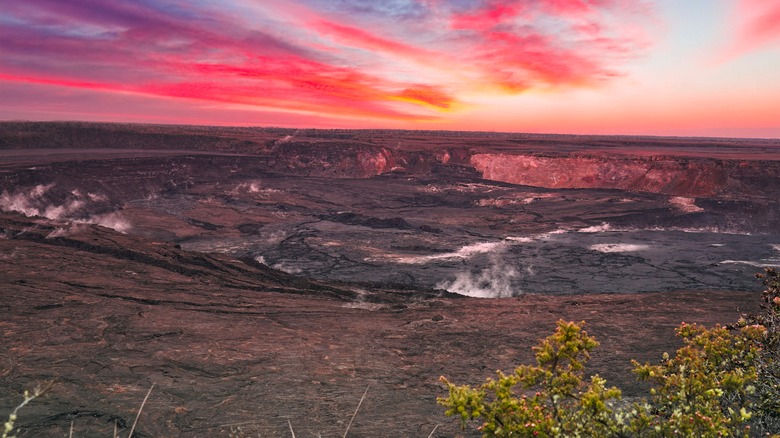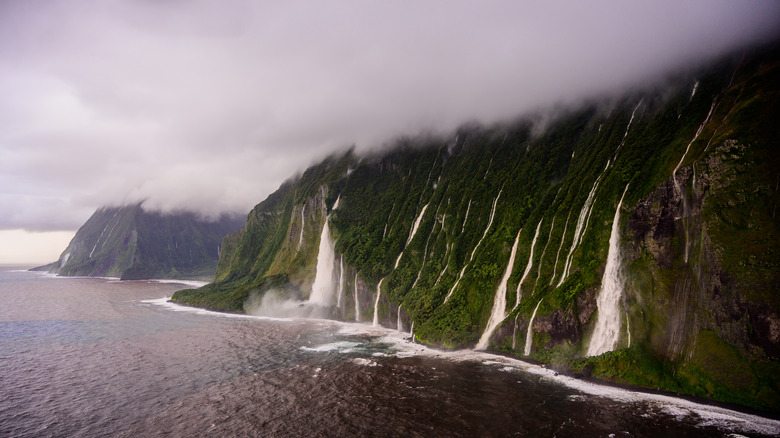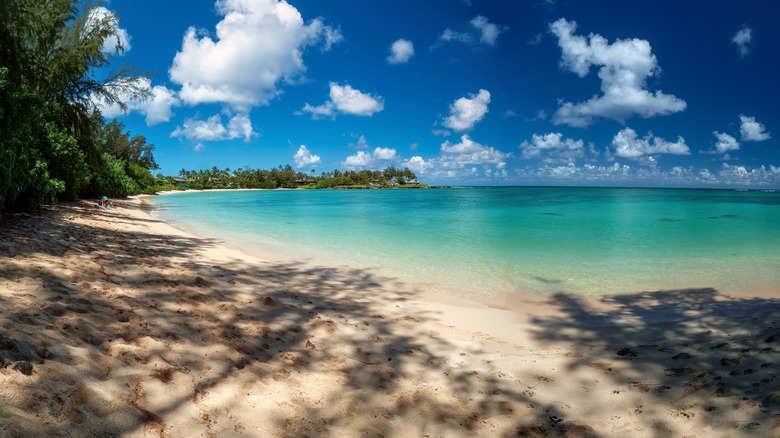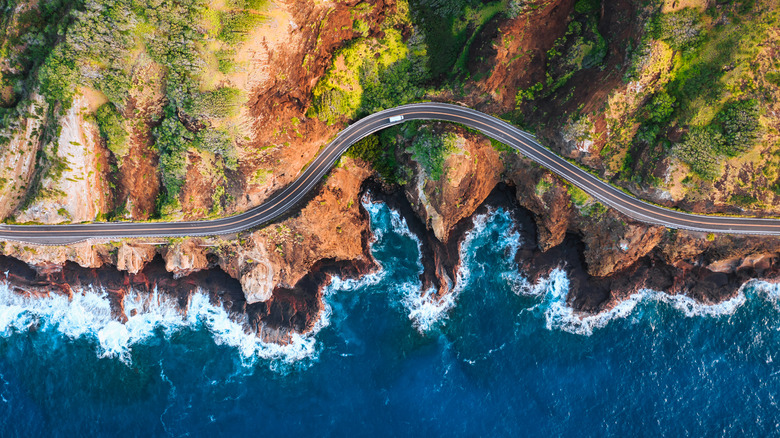The 5 Cheapest Islands In Hawaii For Your Next Tropical Vacation
The U.S. state of Hawaii is one of the country's most aspirational vacation destinations. Its volcanic mountains and white sandy beaches provide the perfect backdrop for a trip spent in the lap of luxury. Naturally, hoteliers, restaurateurs, and other sectors of the service industry have seized on the demand for Hawaii vacations, with the islands now boasting some of the finest resort experiences money can buy.
But why should only the wealthy be able to enjoy the beauty of the 50th state? The truth is, some Hawaiian islands are cheaper than others, and there are many more ways to enjoy them than expensive stays in luxury hotels. When it comes to Hawaii, or anywhere else for that matter, you can plan well for an affordable vacation by avoiding the overpriced tourist traps in favor of less-frequented destinations. Head to these cheaper Hawaiian islands to avoid tourist traps and get more bang for your buck (and don't forget to check out our Hawaii travel guide, too). These are the cheapest Hawaiian islands you can visit.
5. Maui
Known as the "The Valley Isle" thanks to the dip in the landscape between its two towering volcanoes, Maui has long been one of Hawaii's most popular destinations. It is the state's second-largest island with a population of around 160,000 and regularly attracts more than 2 million visitors per year, even as the island continues to recover from the 2023 wildfires.
Maui is known as the home of many microclimates, making it a place of great biodiversity and an obvious destination for nature lovers and hikers, with gorgeous beaches and beautiful forests. The 48-mile-long island is home to several popular towns and resorts that are also popular locations for conferences, weddings, and luxury spa retreats.
Thankfully, there are plenty of options for budget travelers too, with the Department of Land and Natural Resources that manages the island's state parks offering camping to non-residents for $30 a night, as well as cabins for $100 a night. Expect to pay double that for vacation rentals, which can be found across the island. Restaurant prices are higher on the island than in the mainland U.S., but travelers can save money by enjoying local cuisine, including fresh fish and locally grown fruit and vegetables. Seek out Maui's gorgeous untouched coastlines for some choice tropical destinations unfettered by tourist traps.
4. Lanai
There are only three hotels on Lanai, Hawaii's sixth-largest island. The island is about 140 square miles and has a population of just a few thousand people. Lanai City itself is just a small town, the only one on Lanai since the decline of the island's once-bustling pineapple industry (Lanai is still sometimes referred to as "Pineapple Island"). It is known for its pristine, white sand beaches, which the island's government ensures remain immaculate — for example, travelers can only legally wear mineral-only sunscreen, a requirement that helps protect the area's water quality and biodiversity. The law encompasses Maui, Molokai, and Kahoolawe as well.
While the hotels are comparatively luxurious institutions catering to the honeymoon and romantic getaway crowd, there are several options for travelers looking to experience Lanai on a budget. That includes a campsite at Hulopoe Beach Park, an area known for its dolphin sightings and beautiful view of Sweetheart Rock. There are also a handful of Airbnb locations on the island, though prices are comparatively midrange.
Attractions on Lanai are cheap, with several budget food options such as the restaurant Pele's Other Garden, and reasonably priced spa treatments for those looking to unwind. Surprisingly, the island's public golf course is also absolutely free, making the island a perfect spot for keen golfers wanting to improve their game in a stunning location with minimum outlay. For more island golf adventures, check out our guide to tropical resorts perfect for golf getaways.
3. The Island of Hawaii
The island of Hawaii, known by many Hawaiians simply as "the Big Island," is over 4,000 square miles — larger than the 136 other Hawaiian islands combined. The Big Island has four active volcanoes: Mauna Kea, Kilauea, Mauna Loa, and Hualalai, the eruptions of which add to the island's land mass.
Unsurprisingly, the volcanoes represent a large part of the island's appeal, with the Hawaii Volcanoes National Park, which covers about 500 square miles of the island and ascends around 13,000 feet from sea level, offering some of the most jaw-dropping landscapes in the region. Hiking, scenic driving routes, and immersive volunteering projects such as the Stewardship at the Summit are some other exciting things to do on Hawaii's Big Island.
The island is a more affordable option than many other prominent islands of Hawaii. Unlike Molokai, the island has plenty of options when it comes to accommodation, including hotels, condos, and other rental options. However, restaurants on the island are still somewhat expensive, meaning that finding a rental property with a kitchen that allows you to cook is probably the best way to go if you're heading to the Big Island on a budget.
2. Molokai
The island of Molokai emerges as arguably the second-most affordable travel destination in Hawaii. And thankfully, Molokai boasts many of the attractions that make Hawaii an idyllic place to visit, while being suitable for travelers looking to explore the state on a tighter budget.
Molokai is known as "the Friendly Isle," and has become famous for the welcoming attitude of its roughly 7,400 permanent inhabitants. The fifth-largest island in Hawaii, Molokai is only 38 miles long and 10 miles across and offers some of the state's most dramatic landscapes, including imposing sea cliffs that stand as the highest in the world and mountains that soar to an elevation of nearly 5,000 feet. Molokai's gorgeous fringing reef –which has long been a draw for snorkelers and scuba divers — is the longest in the world, meaning you could spend days exploring this underwater paradise. Another reason to visit Molokai is its diverse wildlife, with the island being the home to the Kakahaia National Wildlife Refuge, which focuses on protecting the state's water birds and wetland habitats.
Molokai does little to court tourists. With minimal infrastructure and commercial investment, the island instead focuses on attracting conscientious travelers who want to engage with the island and its culture without impacting its identity. Molokai is therefore not a destination for a casual vacation — only around 65,000 people visit the island per year — but it would surely be the trip of a lifetime for those who care about Hawaii's natural beauty or are willing to get involved.
1. Oahu
Most travel price aggregators list Oahu as Hawaii's most inexpensive island to visit. Though Oahu is home to Honolulu — the state capital and a major business center — on its southern shore, the city isn't the only option when it comes to finding accommodation. Budget travelers are advised to look to the north side of the island to find cheaper places to stay. The North Shore is an hour from the island's second city, Waikiki, and offers many budget places to stay including hostels and rental apartments.
The North Shore is a beautiful destination away from the crowds that will certainly fulfill most travelers' expectations of an idyllic Hawaiian getaway. It is a popular area with surfers, who are attracted to the northern bays' challenging waves. The area is also great for snorkeling — which is of course free, although organized excursions are available – and has many delightful hiking routes both along the coast and into the mountains.
Methodology
How to find affordable destinations in Hawaii is a popular topic on travel blogs and forums, and though it is possible to reach general conclusions on which islands are cheapest, the information available varies. For example, though Molokai is considered a viable budget option by outlets including Cabin Zero and The Travel – the latter of which actually claims Molokai is the cheapest island for a seven-day trip — the island is absent from several other surveys since it's a less popular tourist destination and offers fewer accommodations and amenities. Molokai is also absent from Hawaii Tourism Authority data published by Nerd Wallet, so for the purposes of this article, it just missed out on the top spot due to a lack of data.
We also faced another difficulty in deciding between Maui and Kauai to round out our list, with some metrics suggesting that Kauai may be the cheaper of the two in terms of accommodation and overall expenditure. However, data crunching by The Hawaii Vacation Guide, which took into account data including the price of rental cars and vacation rentals as opposed to simply hotel rooms, offered a more effective overview than other outlets and convinced us that Maui was more worthy of inclusion.
